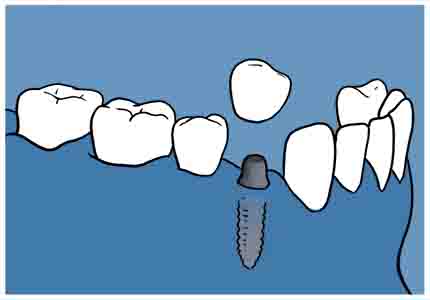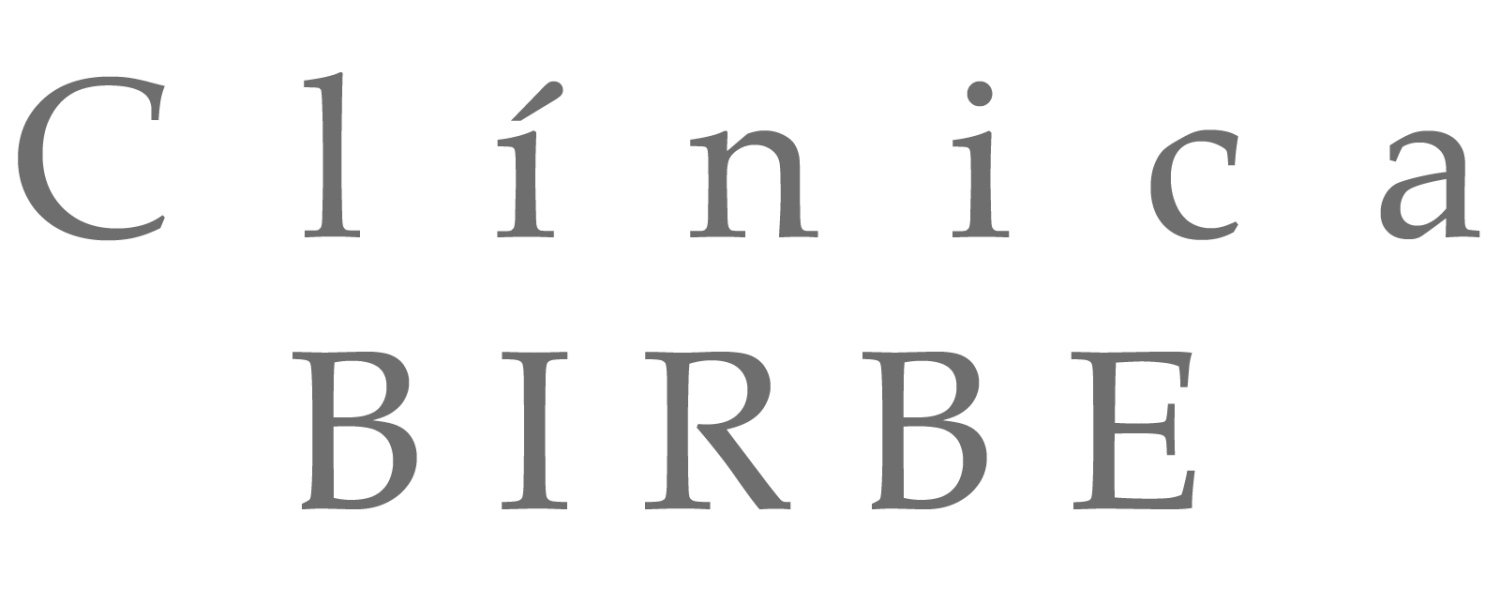Loss of only one tooth
Replace a single missing tooth at Birbe Clinic
People who have lost a single tooth decide to try replacing it many times solely for cosmetic or appearance reasons. But there are also functional reasons for doing it. If nothing is done to replace the missing tooth, there is a risk of movement of the teeth of the opposing arch and of neighboring teeth moving into the edentulous space (space where the tooth is missing), causing problems in neighboring teeth that the chances that these will be lost too. The bone where the missing tooth was housed begins to atrophy immediately after tooth loss.

Treatments for a missing tooth
There are several restorative options the patient can choose to replace a single missing tooth. Restorative options include an adhesive prosthesis (Maryland type), a fixed partial denture, a removable partial denture, or an implant-supported single crown.
Crown over implant
It is the replacement of a lost tooth with a crown placed on a single implant, which behaves like an artificial “root”.
Advantages
- The most important advantage of this treatment is that it is not necessary to carve (“wear”) the teeth next to the “hole”. The areas between the teeth allow to be cleaned by the patient with dental floss, like natural teeth.
- There is a preservation or stabilization of the bone around the implant, after it has been placed in the place previously occupied by the root of the lost tooth. The prosthesis can be designed so that it can be removed by the dentist for repair or updating if necessary (crown screwed onto the implant).
Disadvantages
- The disadvantages of this treatment are that occasionally there is loosening of the screw that retains the prosthesis, the crown can be lowered (loosen), the prosthesis can fracture, or implant failure can occur. However, it should be noted that clinical studies show that 90% of implants (Branemark system) placed 25 years ago for the rehabilitation of patients who had lost all their teeth are still working today. Since 1984, unit prostheses have been placed on implants, and they have shown a similar degree of success.
- The prosthesis does not replace atrophied bone and soft tissue, so it may be necessary to perform a bone or soft tissue graft during implant placement.
Photos before and after treatment
The patient only wanted to replace the missing tooth without wanting to improve the appearance of the adjacent teeth


2. Fixed partial prosthesis over teeth (bridge)
Advantage
- The advantages of this treatment method are its speed (you do not have to wait for the bone to heal, as with the implant); that the price is lower than that of the implant and that the aesthetic result is usually good in the medium term. A fixed partial denture replaces the missing tooth, stabilizes the occlusion (the “socket” of the teeth) and prevents the movements of the opposing teeth.
Disadvantages
- A fixed partial denture cannot be used on teeth that do not have enough bone support or sufficient tooth structure to hold the length of the partial denture in place. There is a risk of tooth decay and possible damage to the tooth nerve during grinding (“wear”), which requires endodontic treatment (“devitalization” of the tooth), with the problems of this treatment.
- There is a risk of affecting the gingival tissues (gums) and the bone surrounding the teeth, which can lead to periodontal problems (“pyorrhea”).
- Some partial dentures can debond (“come off”) and occasionally break. Daily hygiene is difficult with some partial dentures.
- There is also an aesthetic risk since the goal of this prosthesis is to resemble the remaining teeth, which is often difficult to achieve.
3. Maryland Prosthesis:
The adhesive partial denture is a metal and porcelain prosthesis that is cemented (“glued”) to the palatal or lingual (“behind”) of the teeth adjacent to the gap where the tooth is missing.
Advantage
- Like the conventional fixed partial denture, the adhesive partial denture is fixed and not removable (the patient cannot remove it). However, this type of prosthesis requires less preparation of the teeth.
- It replaces the missing tooth, stabilizes the occlusion and prevents the eruption of the opposing teeth. The treatment time is short. It can be placed in situations where the available space is so limited that an implant cannot “fit”.
Disadvantages
- There is a risk of loosening or detachment in many patients.
- There is a risk of tooth sensitivity or denture breakage.
- Sometimes the metal shows through on adjacent teeth and aesthetics are compromised.
- Sometimes there is a soft tissue problem under the partial denture when daily hygiene is difficult.
- The duration of this restoration is also variable. This option is often selected for very young patients and is considered by some dentists as a temporary restoration until patients are older and have finished growing. Then one of the other definitive prostheses is placed (on an implant or bridge on neighboring teeth).
4. Removable Prothesis
It is the replacement of a lost tooth with a crown placed on a single implant, which behaves like an artificial “root”.
Advantage
- This method of treatment is often the least expensive and the one that requires the shortest treatment time. If necessary in the future, additional teeth can be added to the single tooth removable denture.
Disadvantages
- Many patients find it many disadvantages, including that it is removable (it is not fixed), making it uncomfortable and uncomfortable for many patients in the long term. It can affect the teeth where it rests, producing an increased risk of tooth decay and gingival (gum) problems.
- In some situations, metal is holding the prosthesis in place, but it is visible when the patient smiles. Metal “hooks” can overload the teeth they rest on, increasing their mobility if they are affected by periodontal disease (“pyorrhea”). Some patients have trouble adjusting to the prosthesis. They have difficulties in speech and chewing. These patients often complain that they find it too bulky.
- Importantly, whatever treatment is selected, long-term success depends on a controlled oral hygiene maintenance program with your dentist. All teeth need care, whether natural or prosthetic, and proper daily hygiene is necessary to maintain optimal dental health. If you have any further questions, please contact your surgeon or dentist.


